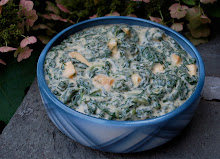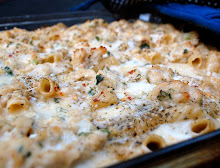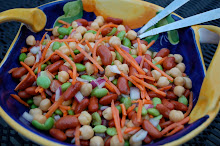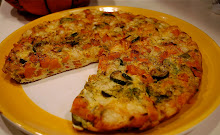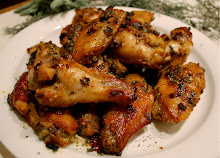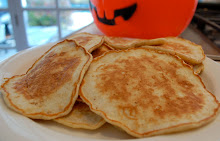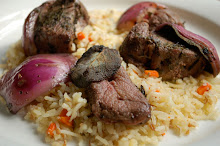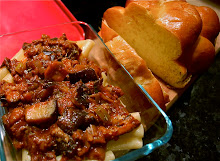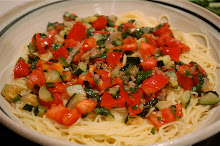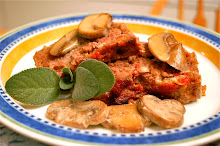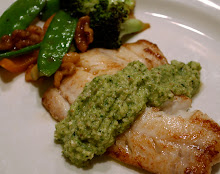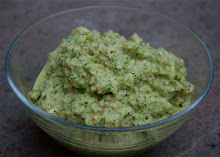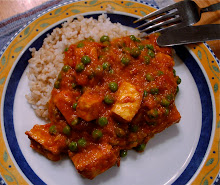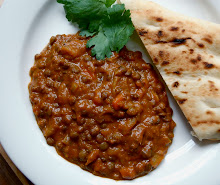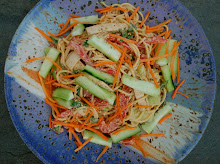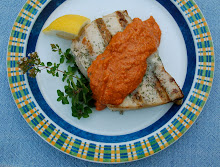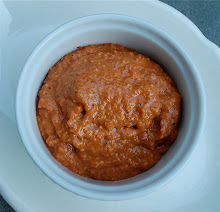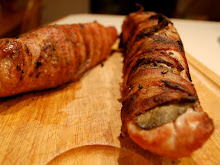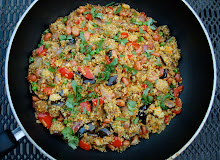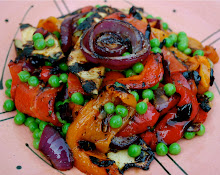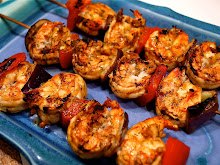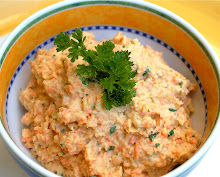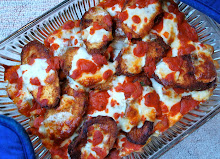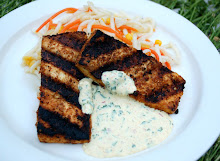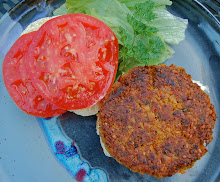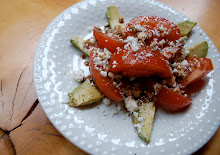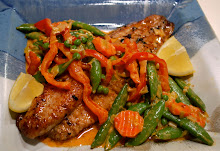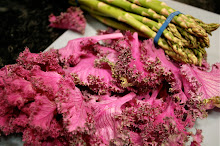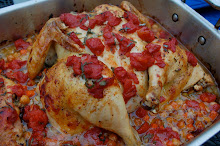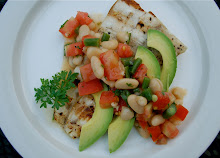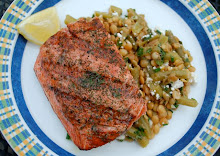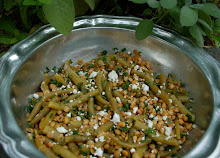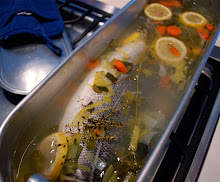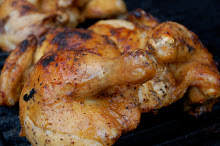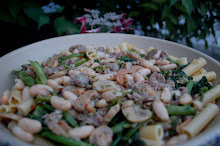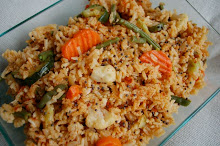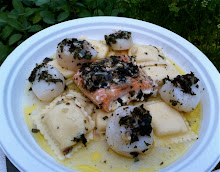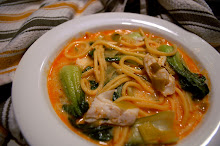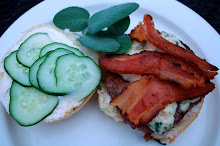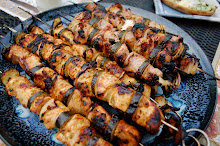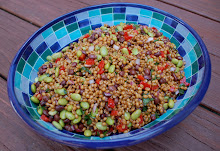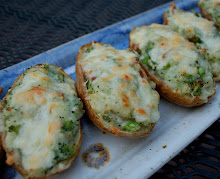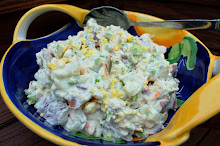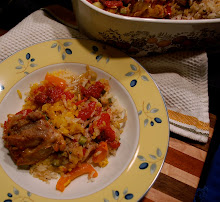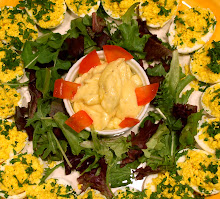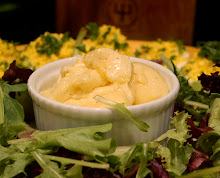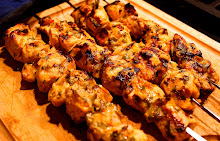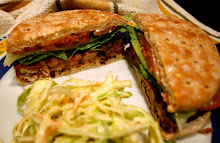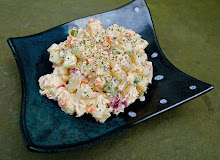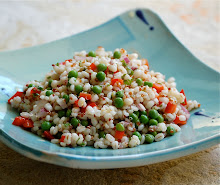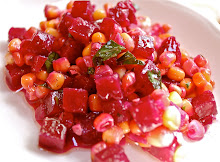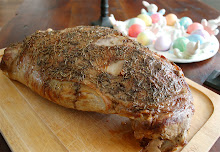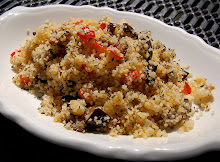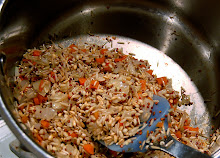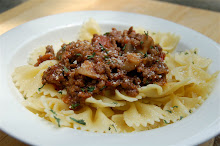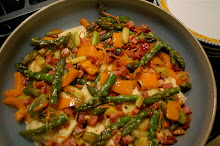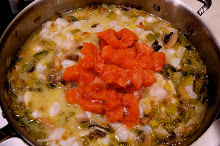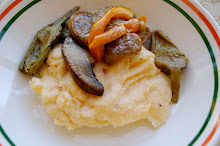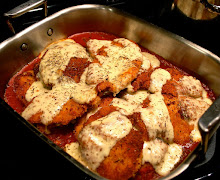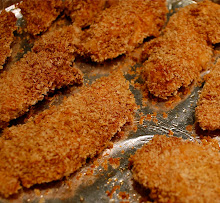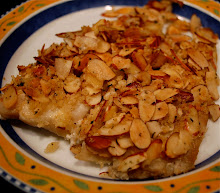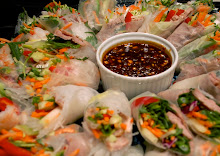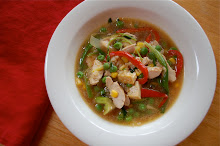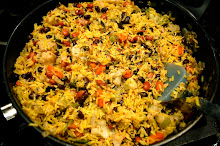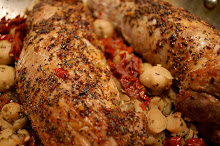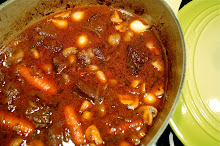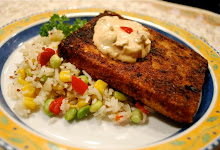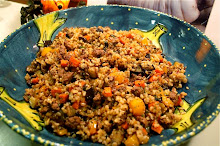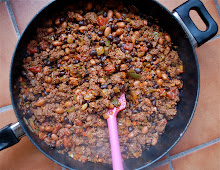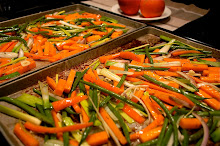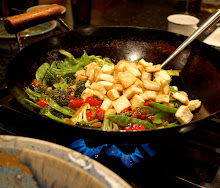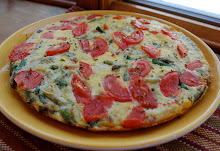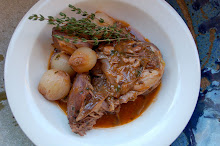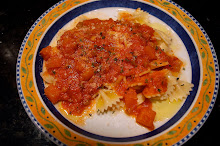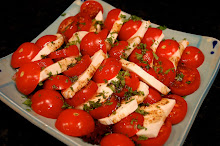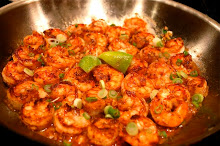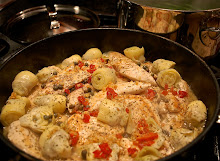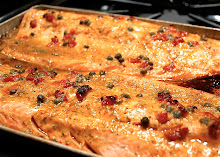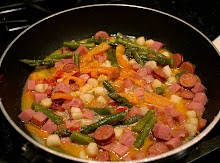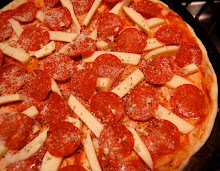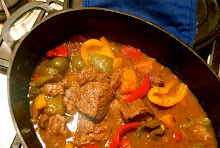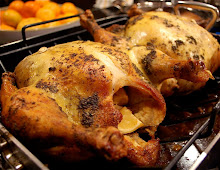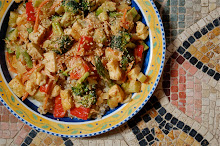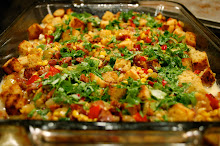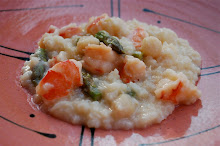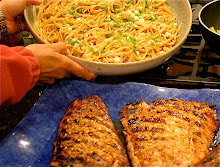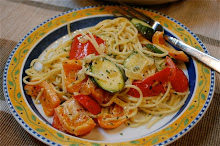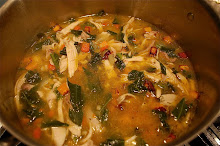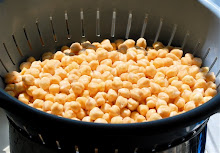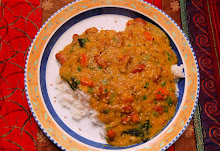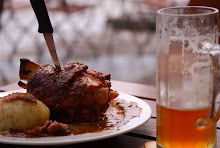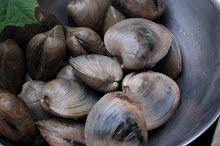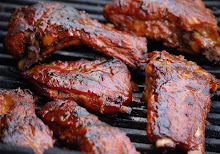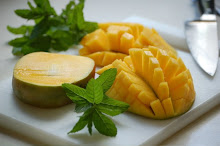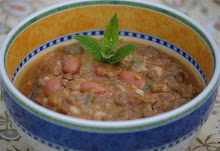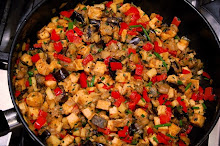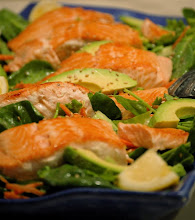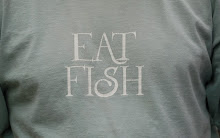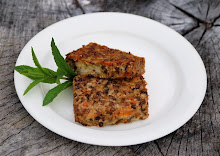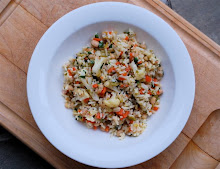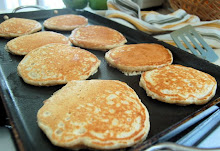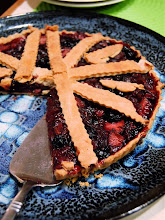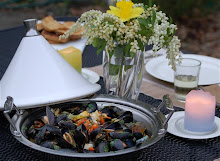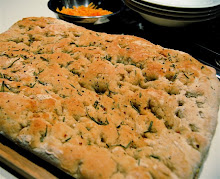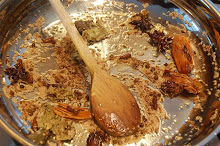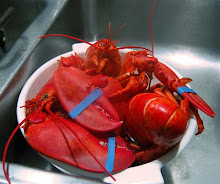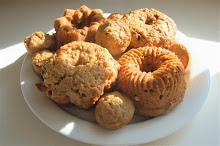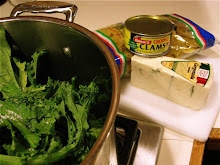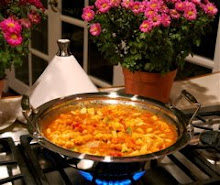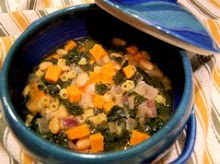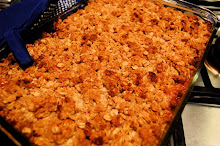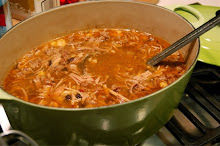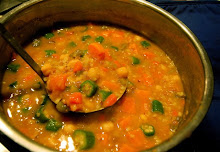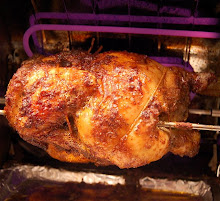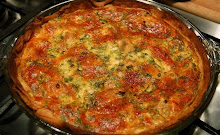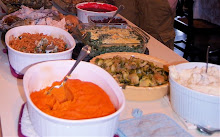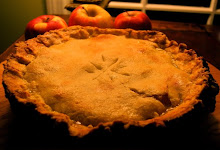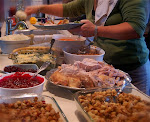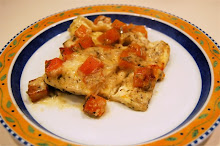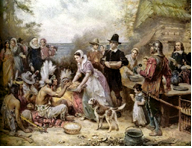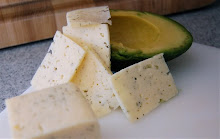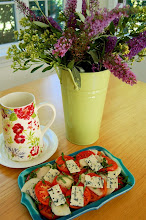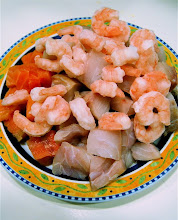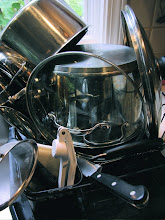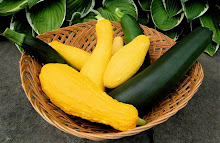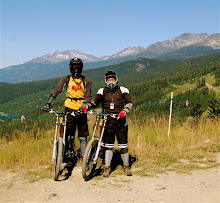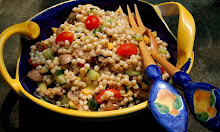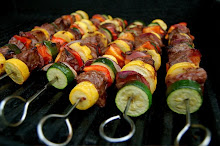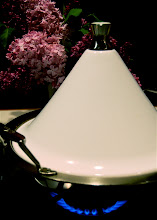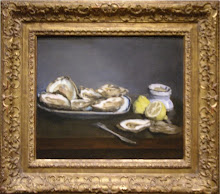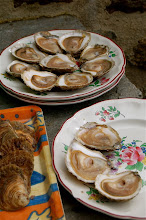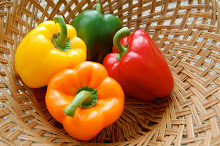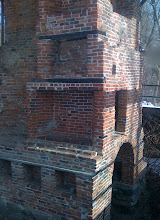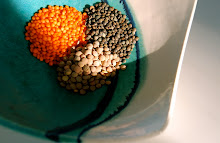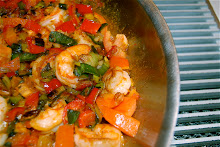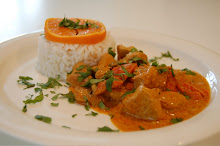 For years now our family has had a New Year’s tradition of congregating at Thierry and Julie’s, our brother and sister in law in Montpellier, Vermont, for a few days of skiing, reunion, skiing, snowballing, skiing, sledding, skiing singing, and lots and lots of cooking. Home of the New England Culinary Institute, there was plenty of good cooking vibes in the air, which we flavored with smoke from the pizza oven Thierry built in his driveway.
For years now our family has had a New Year’s tradition of congregating at Thierry and Julie’s, our brother and sister in law in Montpellier, Vermont, for a few days of skiing, reunion, skiing, snowballing, skiing, sledding, skiing singing, and lots and lots of cooking. Home of the New England Culinary Institute, there was plenty of good cooking vibes in the air, which we flavored with smoke from the pizza oven Thierry built in his driveway. On New Year’s Eve, Chef Peter – now crafting specialty flavors for an ice cream concern in the area – would be responsible for pounds and pounds of dough, while I worked with numerous brothers in law to dress the pizza rounds Peter would toss us. With dozens of toppings we created untold new varieties of pizza each year. We prepared the pizzas in the garage with both doors opened (no matter the temperature!) on a ping-pong table – the only surface big enough for the job. We’d then transfer the prepped doughs to Thierry’s pizza peel for delivery to the oven outside. There he would cook them, holding court in the driveway as friends and neighbors poured in to enjoy fresh hot cooked pizza on blistering cold Vermont first nights. On our best night we cooked over 60 pizzas!
On New Year’s Eve, Chef Peter – now crafting specialty flavors for an ice cream concern in the area – would be responsible for pounds and pounds of dough, while I worked with numerous brothers in law to dress the pizza rounds Peter would toss us. With dozens of toppings we created untold new varieties of pizza each year. We prepared the pizzas in the garage with both doors opened (no matter the temperature!) on a ping-pong table – the only surface big enough for the job. We’d then transfer the prepped doughs to Thierry’s pizza peel for delivery to the oven outside. There he would cook them, holding court in the driveway as friends and neighbors poured in to enjoy fresh hot cooked pizza on blistering cold Vermont first nights. On our best night we cooked over 60 pizzas! All year long this inspired me to cook pizza, and Friday nights became pizza night for many, many years in our family. We first used a bread making machine to prep the dough, but then found that a great dough can be made by hand or with a Kitchen Aid mixer very, very quickly.
All year long this inspired me to cook pizza, and Friday nights became pizza night for many, many years in our family. We first used a bread making machine to prep the dough, but then found that a great dough can be made by hand or with a Kitchen Aid mixer very, very quickly.
There is no end to the variety of pizzas you can come up with, with or without red sauce, and we even invented interesting desert pizzas. Here’s a start with a simple dough recipe, that I often spice up with a tablespoon or so of dried diced onion, or minced garlic or a teaspoon of dried herbes du Povence – or all of the above! The only advice I’ll give is to keep the amount of sauce under control, cook at high heat (at least 450F) and either use a pizza stone (I usually don’t) or a pizza pan with large holes throughout the bottom – this is my favorite for a nice browned crust.
Pizza Dough

4 cups bread flour
2 tsp salt
2 tsp sugar
2 tsp breadmaker granulated active dry yeast
1½ cup very warm water (about 105F)
1 Tbsp olive oil
In a mixer fitted with a dough hook and set on medium, mix together the first four ingredients (and any herbs you night wish to add). Add the water and then the olive oil. Allow the dough to form a ball that has taken up all the flour. At that point, knead on medium-slow speed for 5 minutes. Place 1-tablespoon olive oil in a large bowl. Form dough into a ball and turn into the bowl. Roll dough ball around to assure all surfaces are coated and cover bowl with plastic wrap. Let sit about 2 hours in the kitchen. I don’t find that a ‘warm, dry’ spot is necessarily needed. I have never had a problem simply placing the bowl on the counter top and walking away – and we live in New England! Makes enough dough for two 14-inch large pizzas.
























































































































































































































































































































































































































































































































































































































































































































































































































































































